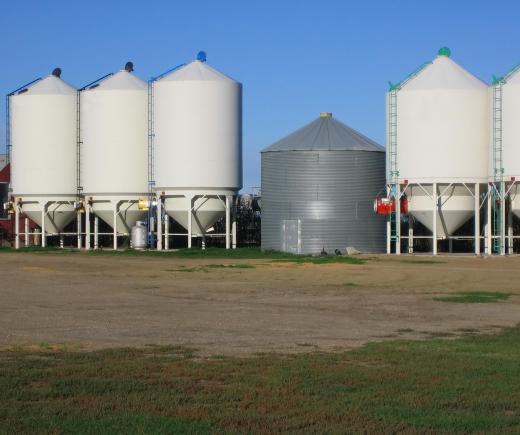A range of options are available for raw materials storage, depending on the product and how it is used. These include indoor and outdoor facilities with pollution controls, security measures, and a number of other steps to protect materials in storage. The best option can depend on a company’s needs and regulatory requirements that may stipulate specific handling for hazardous materials. Consultants are available to help companies learn more about the available choices and the most appropriate one for their applications.
Outdoor raw materials storage is not recommended for many materials because it can expose products to weathering and also creates a risk of environmental contamination. Chemicals may leach into the groundwater or could come into contact with storm water runoff, which might carry them into neighboring bodies of water. This can be an appropriate option for inert materials, or companies can secure their raw materials storage facilities with measures like roofing, concrete pads, and berms to limit leaching.

Covering materials with water-resistant materials can protect them from the elements. They can also be stored in silos or barrels, an option commonly seen with grains. The silo provides ready access as well as quick loading and unloading, which can be important for efficiently moving products through a facility. It containerizes the grain to limit spills and protect it from harsh weather that might promote the development of mold and mildew.
Indoor storage options include warehouse facilities, which may be climate-controlled if necessary, along with storage rooms. This type of raw materials storage can hold barrels, large storage bins, pallets, or piles of materials for processing. One advantage to indoor storage is that it is easier to secure supplies. Toxins can be confined in specific areas and facilities may use air filtration and other measures to control the environment and protect workers. Expensive raw materials can be secured behind gates and fencing to limit loss.
Organization of a raw materials storage facility is important. Workers need to be able to access supplies quickly, whether they are making new products or preparing raw materials for shipping to new destinations. If the facility is not arranged logically, this may add time to routine tasks like taking inventory and pulling materials for use in other parts of a facility, which will add to the overall costs of maintaining and using the facility. Managers can determine the best way to arrange products in the space, making way for new deliveries as necessary while maintaining the underlying organizing scheme.
Ever since she began contributing to the site several years ago, Mary has embraced the exciting challenge of being a About Mechanics researcher and writer. Mary has a liberal arts degree from Goddard College and spends her free time reading, cooking, and exploring the great outdoors.

